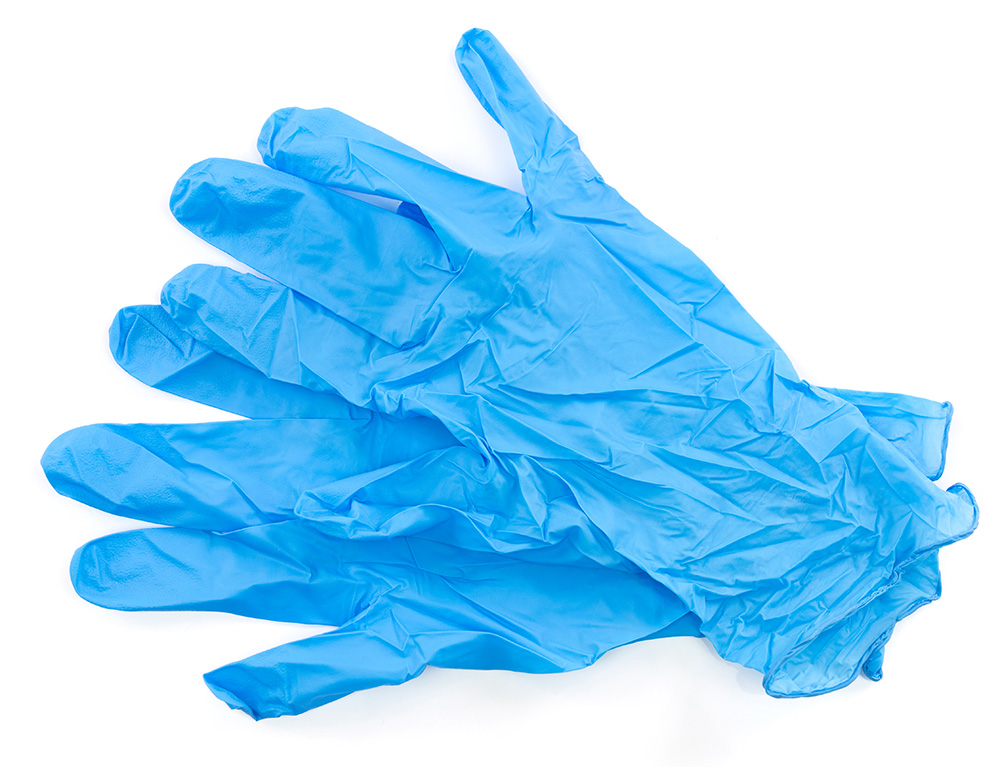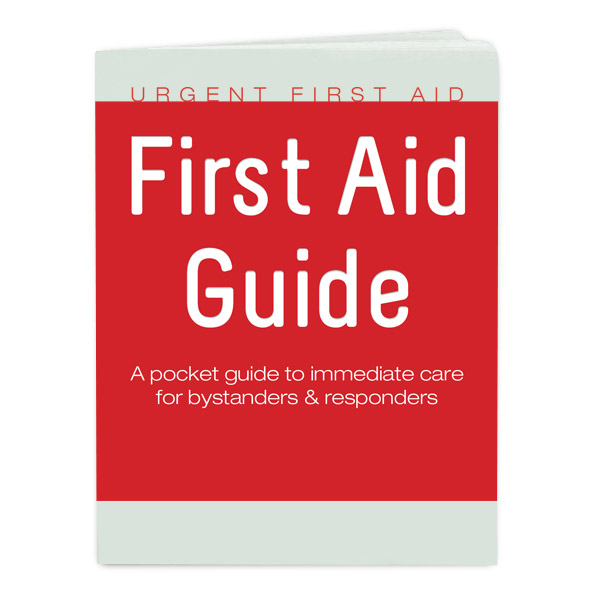Disaster Supply Kit: First Aid
THE POINT
DO THIS
- Determine what first aid and personal medications are needed for you and your family in your disaster supply kits.
- Put those items in your emergency kits.
- Rotate as necessary.
VIDEOS
DOWNLOADS
Disaster Supply Kit First Aid
 The most important first aid things you need for your disaster supply kit is not in your kit at all. It is proper training in what to do in a first aid or medical emergency. Learn what to do in a medical emergency situation by taking first aid, CPR, and AED classes from the Red Cross or other reputable first aid training organization.
The most important first aid things you need for your disaster supply kit is not in your kit at all. It is proper training in what to do in a first aid or medical emergency. Learn what to do in a medical emergency situation by taking first aid, CPR, and AED classes from the Red Cross or other reputable first aid training organization.
Personal protective equipment (PPE): You are the most important person in an emergency situation, so you need to be careful and watch out for yourself so you are able to continue helping others. Have some basic PPE supplies in your kit for protection from bloodborne pathogens and other infections that you could encounter when giving first aid assistance to others. Include PPE items such as:

Nitrile Gloves
- Non-latex, nitrile exam gloves: Have two or three pair and make sure they are the right size for you. Many people have severe latex allergies and don't even know it, so stay away from latex gloves.
- Rescue breathing barrier: If you have been trained in how to do recue breathing in CPR, you know that a one-way breathing barrier protects you from germs and other things in the victim's mouth. Get proper training to learn CPR.
- N-95 mask: This mask is better than just a dust mask. It can filter out small particles from the air you breathe from a sick person. Again, this is for personal protection for you from the victim and the environment. In a pinch, it can also be used as a crude means of pre-filtering for water treatment.
- Protective glasses or face shield: This is for protecting your eyes from bodily fluids from the victim or other harmful particles and airborne dust. Whether or not you add this depends on how much room you have for first aid in your disaster supply kit.
- Alcohol-based hand sanitizer: Before and after helping someone, wash your hands with soap and water. If that is unavailable, hand sanitizer that is at least 60% alcohol based will work. This is to protect you and the victim from disease and possible future infection.
 First aid kit: When you are putting together a first aid kit for your disaster supply kit, refer to other lists for suggestions as to what you could add, but remember that the first aid supplies are only meant to be for three to five days and only meant for one to three people. First aid kits should reflect the amount of first aid and medical training you have had. Each person in your family should have their own first aid supplies in their own kits packed according to their own needs and abilities. Remember that you need to have room for the other eleven of the twelve areas of emergency preparedness in your kit and it still needs to be portable. Instead of a hard case, pack your first aid supplies in a sturdy, zip-style freezer storage bag to save room, keep your first aid supplies together, and to keep the supplies dry but not dried out. Some first aid supplies you can put in your disaster supply kit include but are not limited to:
First aid kit: When you are putting together a first aid kit for your disaster supply kit, refer to other lists for suggestions as to what you could add, but remember that the first aid supplies are only meant to be for three to five days and only meant for one to three people. First aid kits should reflect the amount of first aid and medical training you have had. Each person in your family should have their own first aid supplies in their own kits packed according to their own needs and abilities. Remember that you need to have room for the other eleven of the twelve areas of emergency preparedness in your kit and it still needs to be portable. Instead of a hard case, pack your first aid supplies in a sturdy, zip-style freezer storage bag to save room, keep your first aid supplies together, and to keep the supplies dry but not dried out. Some first aid supplies you can put in your disaster supply kit include but are not limited to:
- Adhesive bandages: In other kits you may want to have a variety of sizes, but since you are trying to save on room, five or six 1x3 inch bandages will cover most of the little cuts you may have. Include a knuckle bandage, a fingertip bandage, and a few butterfly bandages.
- Compress trauma pad: This is for a larger, bleeding wound. There are various sizes, but a 5x9 inch will do for your kit.
- Rolled gauze: A two inch or four inch gauze roll can be used to make a compression bandage or to hold a splint or gauze pad in place.
- Gauze pads: These cover a wound, help stop bleeding in a compression bandage, and help prevent infection by keeping contamination out of the wound. They come in many different sizes, but 4x4 inch will cover most everything. Four or five should be enough.
- Paper medical tape: A half-inch wide roll of this is good for taping down gauze over small wounds or for splinting fingers and toes.
- Triple antibiotic ointment: Have a couple of packets of topical antibiotic. Apply it directly to wounds to prevent infection before you apply the bandaging.
- Burn gel: Include a packet of the burn gel that removes heat from a minor burn.
- Mole skin: Use a small piece of this to cover a spot on your foot that is starting to get warm and sensitive from friction. It works best before the blister forms.
- Hydrocortisone cream: A packet will be enough to minimize itching from bug bites or rashes.
- Antiseptic towelettes: A few of these are good to have so you can clean the wound before the antibiotic and bandaging.
- Alcohol prep pads: Include a couple of these to disinfect the needle in you sewing kit.
- Over the counter medications: These could include pain reliever, fever reducer, antacid, allergy, anti-diarrhea, and/or others as needed.
- Tweezers: For removing splinters and other hard to grab things.
- Triangle bandage: This is a very versatile bandage. It can be used as a sling, a head bandage, an ankle brace, and many others.
- Safety pins: A few of these can be used to hold clothing or bandaging in place.
- Scissors: Are used to cut away clothing that may be covering a wound or for cutting away a soiled bandage. Short, blunt-nosed scissors will be less likely to injure the victim.
- Sewing kit: Besides the obvious in being able to patch clothing and reattach buttons, needles in the kit can be used to help in removing splinters, bee stingers, fish hooks, etc. If you have had training, you can also use the needle and thread for crude suturing.
 First aid instruction booklet: Our understanding of how to best apply first aid is always improving. CPR and severe bleeding are just two areas that have changed considerably in the last decade. Be sure that you have up-to-date training and an up-to-date first aid booklet in your kit to help you remember safe and proper treatments.
First aid instruction booklet: Our understanding of how to best apply first aid is always improving. CPR and severe bleeding are just two areas that have changed considerably in the last decade. Be sure that you have up-to-date training and an up-to-date first aid booklet in your kit to help you remember safe and proper treatments.
Personal medications: Whether they are over the counter or prescription, you know what medications you and your family members need to maintain your health. Make sure that you have a supply in your kits and that they are rotated as needed. If you are not able to store them in your kits, make sure they are added to your prioritized evacuation grab list.
Insect repellent: Biting and stinging insects can carry disease. In a disaster situation where medical help may be limited, you want to be sure to minimize that possibility. Plus, bug bites are annoying and you don't want to add stress to a stressful situation.
Sunblock and lip balm: Preventing sunburn can be a vital part of survival. When your skin is burnt, you don't sweat properly and your body's natural cooling function does not work. It is very easy to over heat and go into heat exhaustion or worse. Protect your skin with sunblock and protect your lips with a high sun protection factor (SPF) lip balm. Petroleum based lip balm can also be smeared on a cotton ball and used as a fire starter.
Other Things
These other items are not as necessary, but if you have room and you know how to properly use them, they can come in handy. Don't just add them because they are on this list, know why and how to use them.
Liquid Bandage: This has a lot of different brand names, but it essentially looks like a bottle of nail polish and is applied in the same way. Apply it to small cuts. It is an antiseptic that when dry, forms a water-proof protective barrier over the skin and wound. It is not intended for large wounds.
Eye wash or saline solution: A small bottle of this can be used to flush out eyes from dust or other particles, reduce dry eyes, or even to flush out small wounds.
Cotton balls: Can be used to help clean wounds or apply ointments.
Elastic wrap bandage: Used like the triangle bandage and is another option for bandaging and splinting.
Reflective “space” blanket: This can be used to help regulate a victim's body temperature. Be sure to have some insulative material like clothing or a standard blanket between the skin of the person and the reflective blanket.

Windlass Rod Tourniquet
Commercial windlass rod tourniquet: Our understanding of how to safely use a tourniquet has changed in recent years. Lives can be saved if you know how to stop excessive bleeding. Learn how.
Mirror: Sometimes you may need to give first aid on yourself. If that first aid is on your face, it would be hard to do just by feel. A small mirror can help you see what you are doing. Plus, that same mirror can be used with your hygiene supplies and also as a signal mirror for communication.
You can add other items as you see fit, but remember to not make your kit too big. It still needs to be portable. If you have specific medical training, you may want to add items such as a pressure cuff or a stethoscope, but the average person with basic first aid training will have no use for these items.
Basic First Aid Kit
Click Here

12 Areas: First Aid
Click Here

